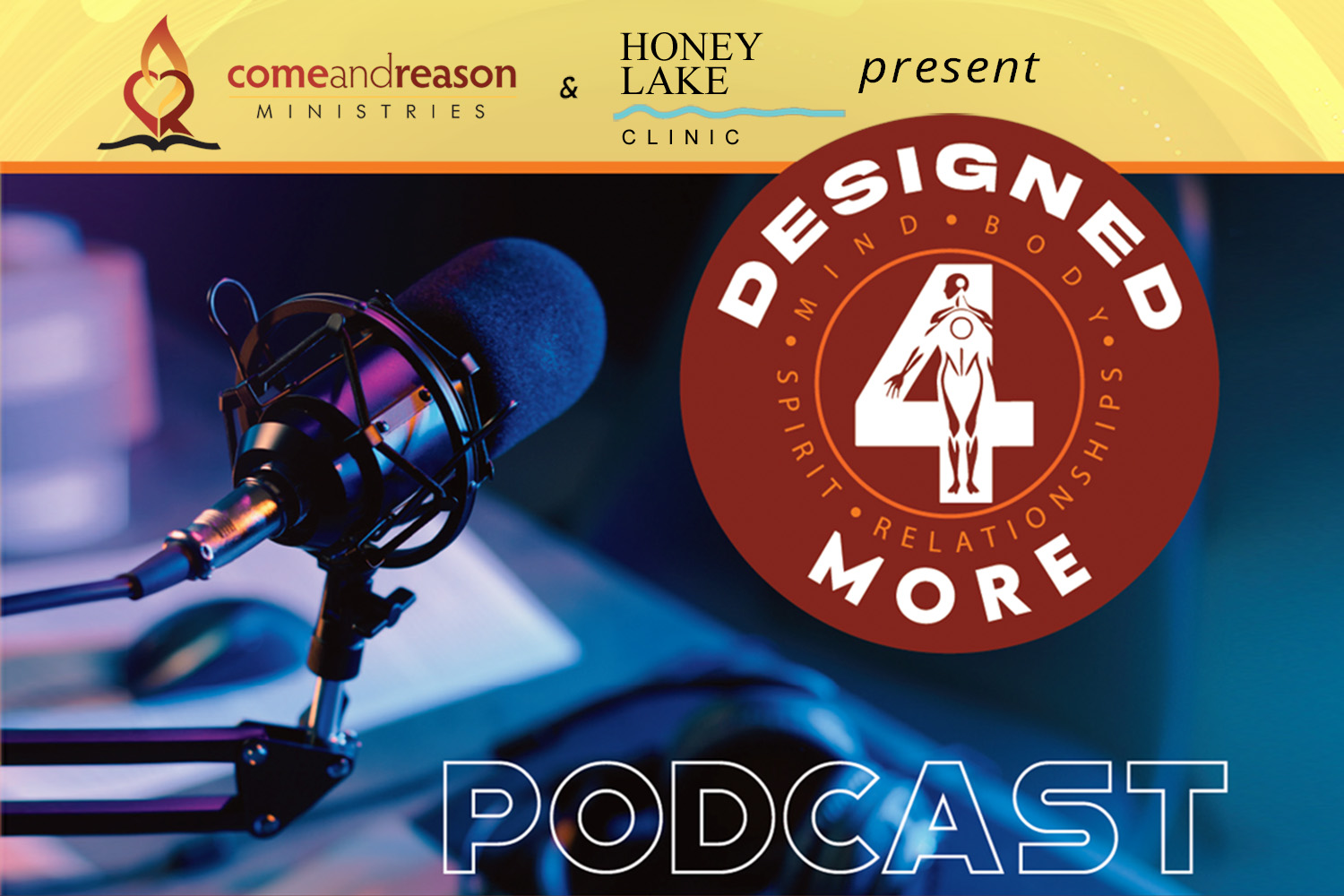As we approach the 100th anniversary of the infamous Scopes Monkey Trial (July 10ŌĆō21, 1925) in Dayton, Tennessee, I was asked to make comments at a joint meeting of the Southern Psychiatric Association and Tennessee Psychiatric Association about the events as they were depicted in the 1960 film Inherit the Wind. Below are the notes that I prepared for that event. (Unfortunately, due to time constraints I was unable to present my prepared comments at the event but want to share them with you here).
┬Ā
In his last public interview, which he gave in 1996, preeminent scientist and astronomer Carl Sagan said the following:
WeŌĆÖve arranged a society on science and technology in which nobody understands anything about science and technology, and this combustible mixture of ignorance and power sooner or later is going to blow up in our faces. I mean, who is running the science and technology in a democracy if the people donŌĆÖt know anything about it? Science is more than a body of knowledge, itŌĆÖs a way of thinking. If we are not able to ask skeptical questions to interrogate those who tell us something is true, to be skeptical of those in authority, then weŌĆÖre up for grabs for the next charlatan political or religious leader who comes ambling along. ItŌĆÖs a thing that Jefferson lay great stress on. It wasnŌĆÖt enough, he said, to enshrine some rights in the Constitution and the Bill of Rights, the people had to be educated and they have to practice their skepticism and their education. Otherwise, we donŌĆÖt run the government, the government runs us (https://www.openculture.com/2015/05/carl-sagan-issues-a-warning-in-his-last-interview-1996.html, emphasis mine).
I think we are seeing this todayŌĆöa lack of skepticism, a lack of educated inquiry, a lack of a truly scientific way of thinking, and, therefore, an intolerance for honest questioning.
I encourage you to be skeptical, to be critical, of what I am going to present in response to this movie because Inherit the Wind is focused on the great questions that have dominated human civilizations throughout all recorded historyŌĆöthe great questions of existence: Where did we come from? Why are we here? And where are we going?
German psychiatrist Karl Jaspers wrote in his book Way to Wisdom: ŌĆ£That which you hold to, upon which you stake your existence, that is truly your GodŌĆØ (New Haven: Yale University Press, 1951).
The question of where we come from has been the subject of great debate throughout human history, and the movie depicts the two most common mythical belief systems that have dominated civilizations throughout recorded history, belief systems that people have constructed and chosen to stake their existence upon. There is a third belief system, the minority report, which I will describe later. But for now, the two most common systems throughout history that are both mythical and accurately depicted in the movie are:
The belief in godlessness in some fashionŌĆönature worship, ancient druids, Gnosticism, mysticism, humanism, atheism, scientism, neo-Darwinism, and the late 18th-century Reign of Terror in France, with their worship of the goddess of Reason.
The belief in the god-kingŌĆöan all-powerful deity and cosmic imperial dictator who makes up rules and enforces them with external punishments. In this mythical belief system, the gods are the source of pain, suffering, and death inflicted upon people; the gods also need sacrifices of various kinds to propitiate their wrath. These gods are created in the image of the people who worship them and are what led to the god-man beliefs, such as the divinity of the Pharaohs, Caesars, and popes and the divine right of kings.
We find a classic example of this mythical deity in the infamous 9th-century BC pagan god Baal. This Mesopotamian god was the one confronted in the famous Bible story of Elijah calling fire down from heaven. Baal was the son of El, we hear the name echo of this name in Elohim or El Shaddai; Baal was called the almighty, the god of heaven, lightening, thunder, and weather, the god who brought the harvest, the god who fought the great serpent leviathan, the god who fought against Mot, the god of death. In his battle with Mot, Baal died and rose again to bring life to the land.
But Baal was an authoritarian, rule-enforcing, and punishing god. Baal was a god who punished disobedience and required sacrifices to be offered in order to propitiate his wrath and earn favor or blessings. Baal eventually became Zeus to the Greeks, Jupiter to the Romans, Thor to the Norse peopleŌĆöand, yes, Jesus Christ to Christians, who worship a god-king who makes up rules like humans make up, uses power to inflict punishment upon rule-breakers, and requires the blood of a human sacrifice to propitiate his wrath so he wonŌĆÖt kill us. This is the mythological deity depicted by the so-called Christianity in Inherit the Wind.
Yes, the movie did a great job of creating a theatrical depiction of these two mythical belief systems that have been battling back and forth through human history.
But the movie also failed to depict the minority view in human history, a view that rejects both of these views and is the most scientific, evidence-based understanding of reality that answers the great questions.
And that is the understanding that reality is not built upon made-up rules that creatures implement and which require external enforcement through inflicted punishmentsŌĆöinstead, reality is built upon design laws, the fixed laws of physics, mathematics, the laws of health, and the laws that govern the healthy operations of our minds and relationships. One cannot experience health while violating the laws of health. These laws are the laws upon which the cosmos is constructed to operate; they are fixed laws and cannot be changed by human will or choice. For instance, humans can pass laws to make marijuana legal, but they cannot pass laws to make it healthy.
Here are a few examples of design lawŌĆöthe laws upon which reality works:
- The law of exertion: Strength comes from exerciseŌĆöuse it or lose itŌĆönot just physically, but also neurologically. If you want strong music skill, you must practice your instrument; strong math ability, you must work problems; strong language skills, you must speak the language.
- The law of love: The principle of giving upon which life is built to operate; e.g.,
- We give CO2 to the plants, and they give oxygen to us.
- The water cycle (oceans > clouds > rain > rivers > oceans).
- All living organisms give if they continue to live.
- The law of worship: We are changed neurobiologically and characterologically to become like what we admire, worship, and spend time watching and assimilating. In psychiatry, we call this modeling.
- The law of liberty: Love, trust, and human development only flourish in an atmosphere of freedom. Coercion of conscience always destroys love and trust, incites rebellion, and results in the destruction of individuality. This is a core principle of design law recognized by the Framers of the Constitution as an inalienable right endowed by our Creator.
And what do the science and evidence reveal about the most rational, logical, evidence-based belief system?
Life, in any form we understand it, requires three elements: physical matter, energy, and usable coded data or information, which is found in DNA and RNA. While theories abound on the godless origins of the physical matter and the energy, there is no random force that codes information. And there is no living organism without coded information.
Charles Darwin defined a principle of reasoning to be used when one attempts to explain events that have occurred in the remote past: Vera CausaŌĆöwhich states: You must posit as a cause that is known to have the power to cause the effect in question.
The effect in question is organized, coded information found in the DNA and RNA of every living organism. What is the known cause of organized information? The only known cause is an intelligence!
And science demonstrates that an intelligence is the cause for the coded information in our DNA and not random forces and chance. Why? Because the number of non-functional sequences of DNA outnumber those that are functional by such a large degree that it is mathematically impossible for functional code to form itself.
Mathematicians call this the problem of combinatorial analysis; the last thing you want in software code is to introduce random changes into the zeros and ones. If you do that, you will get meaningless arrangements long before functional code. The reason is that there are so many more ways to go wrong than there are to create function. If you randomly change code, you are overwhelmingly more likely to create gibberish than functional meaningful code.
Mathematicians have calculated the rarity of functional to non-functional random arrangements in a fairly small protein composed of only 150 amino acids. The functional to nonfunctional random arrangement of codes is 1 functional result to 10 to the 77th power non-functional results (Douglas Epps, Cambridge Mathematician). To put that in context, there are only 10 to the 65th atoms in the Milky Way galaxy; thus, a random search for a new functional sequence would be like looking for one single atom in one trillion galaxies the size of our Milky Way. Even four billion years of lifeŌĆÖs history is not enough time to solve a search problem of that magnitude. Further, there are only 10 to the 40th organisms in the history of the planet and not enough replication events to search a space 10 to the 77th large. It is overwhelmingly more probable that the hypothesis that random events resulted in the occurrence of meaningful code is false than it is to be true. Again, that low probability is just for one protein of 150 amino acids and one protein alone is not functional life (https://www.youtube.com/watch?v=FDSpLBNQk5I).
We can examine the evidences of other elements in the source materials of the two grand philosophies.
DarwinŌĆÖs famous finchesŌĆöwith all the different beaksŌĆöare presented as evidence of random mutations that are selected through enhanced survival over millions of years. But science has proven this hypothesis false. In fact, the changes in the finchesŌĆÖ beaks are epigenetic modifications that occur in one to two generations due to environmental pressures; there are no gene mutations occurring. In other words, the genetic information to modify the beaks was already coded into the DNA. It was environmental pressures that caused the genes to modify a product, a beak, that fit the need of the living organism.
Amazingly, DarwinŌĆÖs finches are evidence of intelligent origin, not godless origin, and validate the BibleŌĆÖs position that our choices and experiences pass down three to four generations, which is what epigenetic science tells us happens with epigenetic modifications.[1]
The biblical record is consistent with genetic science in at least three other ways:
- Jacob does a strange thing when negotiating with Laban for payment for his work. He negotiates that all the spotted, speckled, and striped sheep and goats would go to him and all the solid-furred animals would be LabanŌĆÖs. Then the Bible says: ŌĆ£Jacob, however, took fresh-cut branches from poplar, almond and plane trees and made white stripes on them by peeling the bark and exposing the white inner wood of the branches. Then he placed the peeled branches in all the watering troughs, so that they would be directly in front of the flocks when they came to drink. When the flocks were in heat and came to drink, they mated in front of the branches. And they bore young that were streaked or speckled or spottedŌĆØ (Genesis 30:37ŌĆō39 NIV84). This has now been documented to cause an epigenetic modification of the agouti gene through methylation (Backon, Joshua, ŌĆ£Jacob and the Spotted Sheep: The Role of Prenatal Nutrition on Epigenetics of Fur Color.ŌĆØ Biology. 2008. https://www.semanticscholar.org/paper/Jacob-and-the-Spotted-Sheep%3A-The-Role-of-Prenatal-Backon/194ef71dd0af81f87cebdeda41ac64a85bc44a74).
- The Bible says that God made a male first and took from the male the tissue to make a female. This is contrary to anything observable in the ancient world for, naturally, all babies, male and female, are born from females. Yet, we know with modern science that a female could not produce a male because a female doesnŌĆÖt possess the genetic material, coded information in the Y chromosome, necessary to produce a male. But a male can produce a female because to be a female only requires one X chromosome to be active in each cell.
- Genetic entropy: Godless evolutionary theory teaches that random mutations happen to the human genome and, over time through natural selection, cause the species to advance and develop. But modern genetic science documents that the opposite is happening. With every generation, there are a thousand new damaging gene mutationsŌĆöand there has not been one mutation identified that adds genetic information or makes the species healthier or more robust. In other words, consistent with the second law of thermodynamics, the human species is slowly decaying, not evolving. This is what the Genesis account said would happen if humans broke trust with GodŌĆöthat life would slowly decay and die.
So Inherit the Wind demonstrates the falsity of two mythical belief systems: godlessness and the god-king. But there is a minority view that, I believe, is reality, and that is the belief in an intelligent, benevolent designer whose laws are design lawsŌĆönot imposed rulesŌĆöthe laws that life itself is constructed to exist and operate upon. And being in harmony with those laws will result in health.
I invite you to embrace the minority reportŌĆöthe belief in a benevolent designer whose laws are the protocols reality exists and operates upon.
Here is another video providing further science that reveals the irrationality of the godless origins of life. https://www.youtube.com/watch?v=WCBHNDTEgWk
[1] Abzhanov, Arhat, Meredith Protas, B. Rosemary Grant, Peter R. Grant, Clifford J. Tabin (September 3, 2004). “Bmp4 and Morphological Variation of Beaks in Darwin’s Finches”. Science┬Ā(USA:┬ĀAAAS)┬Ā305 (5689): 1462ŌĆō1465. doi:ISSN 0036-8075. OCLC 1644869. PMID 15353802, retrieved 2008-03-08.
┬ĀAbzhanov, Arhat, Winston P. Kuo, Christine Hartmann, B. Rosemary Grant, Peter R. Grant, and Clifford J. Tabin (August 3, 2006). “The calmodulin pathway and evolution of elongated beak morphology in Darwin’s finches”. Nature┬Ā(UK: Nature Publishing Group)┬Ā442 (7102): 563ŌĆō567. doi:10.1038/nature04843. ISSN 0028-0836. OCLC 1586310. PMID 16885984. retrieved 2008-03-08.
┬Ā
┬Ā












 using your credit or debit card (no PayPal account needed, unless you want to set up a monthly, recurring payment).
using your credit or debit card (no PayPal account needed, unless you want to set up a monthly, recurring payment). instead?
instead?